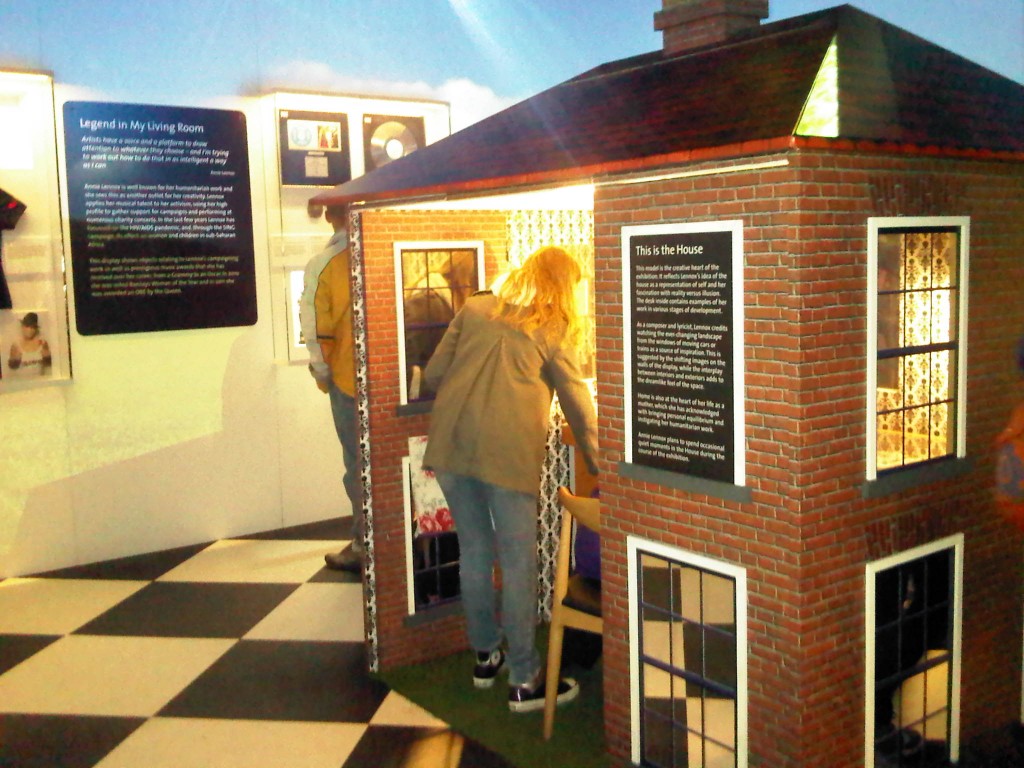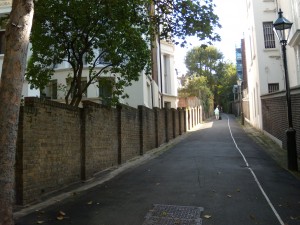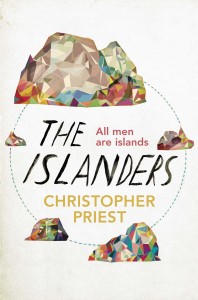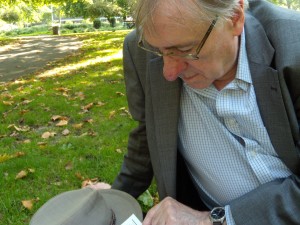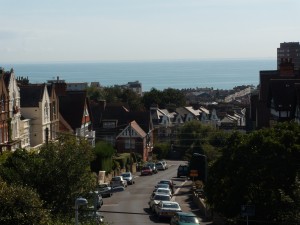On Monday I took the train across to Rye, where I visited an exhibition at the Rye Art Gallery of the works of Jane Lewis, a marvellous painter working in the tradition of British surrealism. She was a new discovery for me, and made the trip worthwhile all on her own, but then you don’t really need a specific reason to visit Rye. I’m enchanted and exhilarated by my almost daily discoveries about the literary and artistic heritage of East Sussex, a wild and roguish county and so different from the more manicured West Sussex, where I grew up. I already knew that Henry James lived in Rye for some years, but it wasn’t until last week that I found out that Joan Aiken, John Christopher and Rumer Godden lived there too. The Tripods was filmed in Rye! Sheer delight.
So I was wandering the cobbled streets, poking around the irresistible antique shops and taking photos of Lamb House, the beautiful eighteenth-century building that was home to both Henry James and Rumer Godden, and thinking for a lot of the time about Lionel Shriver. I’ve often enjoyed Shriver’s journalism for its decisive voice, but never got drawn into the debate surrounding We Need to Talk About Kevin for the simple reason that I hadn’t read it. I tend to mistrust books that become overnight bestsellers. My fear, I suppose, is that there will be something lacking about them, something too easy. Indeed, my main reason for wanting to catch up with Kevin now was that Lynne Ramsey had made a film of it. Both her Ratcatcher and Morvern Callar are important films for me, and any film with Tilda Swinton in it goes straight on my ‘to see’ list in any case.
The first fifty pages of Kevin impressed me a great deal. A recent article compared Lionel Shriver, with her strict Christian upbringing and her deep interest in social morality, with George Eliot. I wouldn’t disagree for a moment, but with her elegant, circumlocutory sentences, her clear fascination not only for what is said but how it is phrased, it was Henry James I thought of first, and so perhaps it’s no surprise that Lionel Shriver and Rye became bundled together in my thoughts.
And the writing was brave! Early on, when Eva is still trying to decide whether to take the plunge and start a family, there were pages that knocked me sideways with the truth in them:
I disappointed myself by finding our perfectly pleasant lunch with perfectly pleasant people inadequate. Why would I have preferred a fight? Weren’t those two girls captivating as could be, so what did it matter that they were eternally interrupting and I had not for the whole afternoon been able to finish a thought? Wasn’t I married to a man I loved, so why did something wicked in me wish that Brian had slipped his hand up my skirt when I helped him bring in bowls of Haagen-Daas from the kitchen?
I held my tongue. You would have had no time for my nit-picking about how wasn’t the luncheon a little bland, didn’t you have the feeling like, what’s the point, isn’t there something flat and plain and doughy about the whole Father-Knows-Best routine when Brian was once such a hellraiser? They were good people and they had been good to us and we had therefore had a good time. To conclude otherwise was frightening, raising the spectre of some unnamable quantity without which we could not abide, but which we could not summon on demand, least of all by pretending in virtuous accordance with an established formula.
I was so happy to think I’d been proved wrong, to have found a bestselling mainstream novel that was also an elegant work of literature and with a radical message. Over the following 350 pages I was slowly to have that pleasure eroded. Kevin caused a lot of controversy when it first came out. First of all, Shriver’s long-time agent refused to handle it, saying she hated the book so much she couldn’t take it on. Then, thirty publishers rejected it outright, leaving it to a small American indie to take the risk with a book the more established firms seemed to regard as the Satanic Verses of rampant feminism. Readers seemed equally divided. Some called Shriver a childless child-hater, others hailed her as the mothers’ true champion. But controversy as so often bred huge success. The book won the Orange Prize and was the book of book group choice for many months and years following publication.
I see it as an opportunity lost. It’s funny, sharp and well written, and where so many books this popular are bland and trite that has to be a wonderful thing. It also raises hugely important questions about women and family and the creative life. For me, it’s a tragedy that it raises these questions only to chicken out of the debate by presenting the reader with a portrait of motherhood and family life that is so monstrous, so exaggerated, so unbelievable that in the end that reader is reassured rather than radicalized. There’s no way it’s going to be like this, so why should I worry?
Kevin as a character is unbelievable on so many levels. Even if you take into account the idea that there are children born who are ‘bad to the bone,’ whose socio- and psychopathic behaviour is not the result of familial abuse but of some innate wrongness, he’s unbelievable. There’s plenty of documentary evidence to show that even such ‘junior psychos’ are conflicted in and confused by their own behaviours; Kevin is far more Damien Omen 2 than he is John Venables.
The kind of existential denial that Shriver suggests Kevin Khatchadourian suffers from was brilliantly portrayed by Dostoevsky in the person of Nicolai Stavrogin, the ice-hearted anti-hero of his novel The Devils. Yet even Stavrogin is conflicted – that’s what makes him interesting as a character. Are we meant to believe that Kevin is supernaturally bad? If so, then isn’t this the ultimate get-out clause? There are plenty of risks involved in starting a family, but giving birth to the son of Satan must rank pretty low on the list of considerations.
Had Shriver chosen to stick with the less easily definable, more insidiously pervasive issues of the first part of this novel, then I believe Kevin would be what it clearly set out to become: a modern classic. As it is, it’s a cop-out and a huge disappointment, a betrayal even. On p347 I was smashed in the face by the following:
From a young age there was only one thing I had always wanted, along with getting out of Racine, Wisconsin. And that was a good man who loved me and would stay true. Anything else was ancillary, a bonus, like frequent-flier miles. I could have lived without children. I couldn’t live without you.
OMG! Words fail me. And this – more Jane Austen than Dostoevsky – was supposed to be a feminist text???
I’m still looking forward to Lynne Ramsey’s film. I just wish people would start asking better questions about the book it was based on.
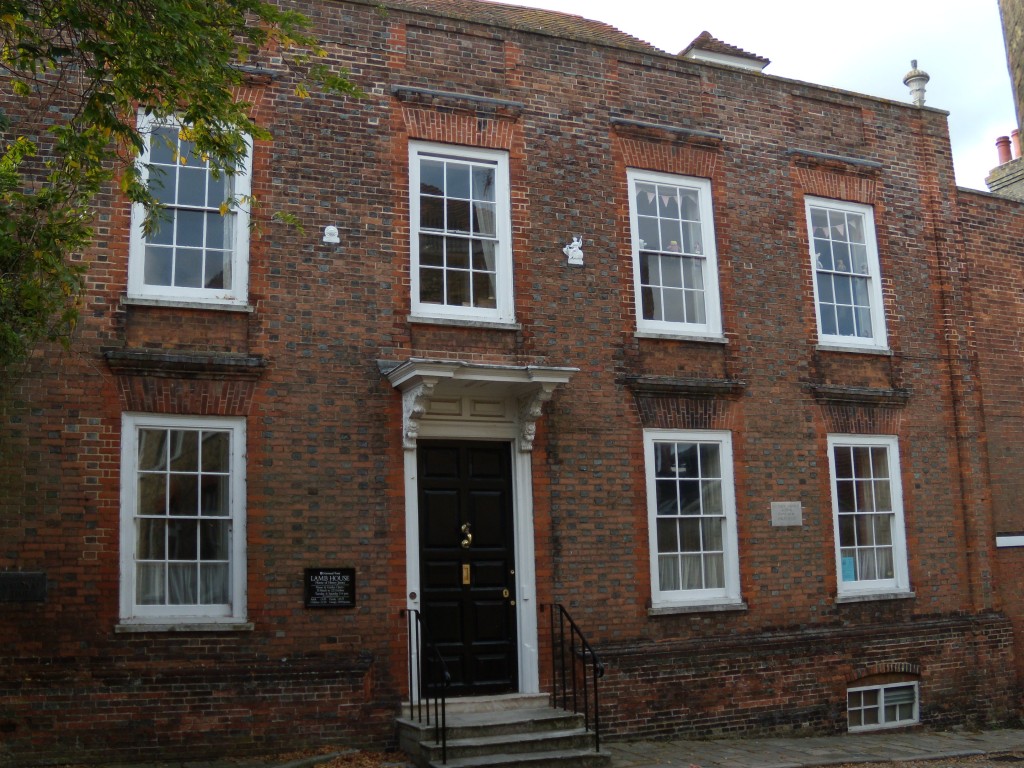
Lamb House, West Street, Rye
